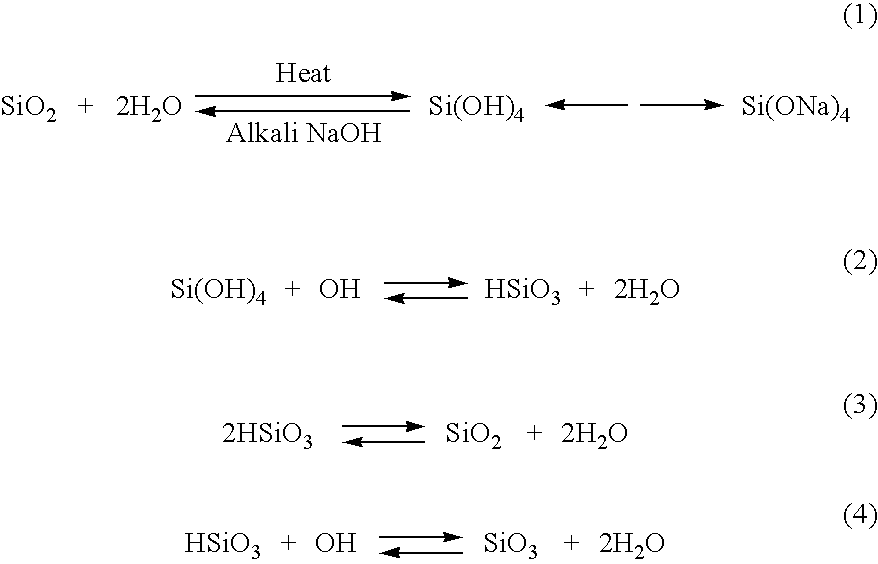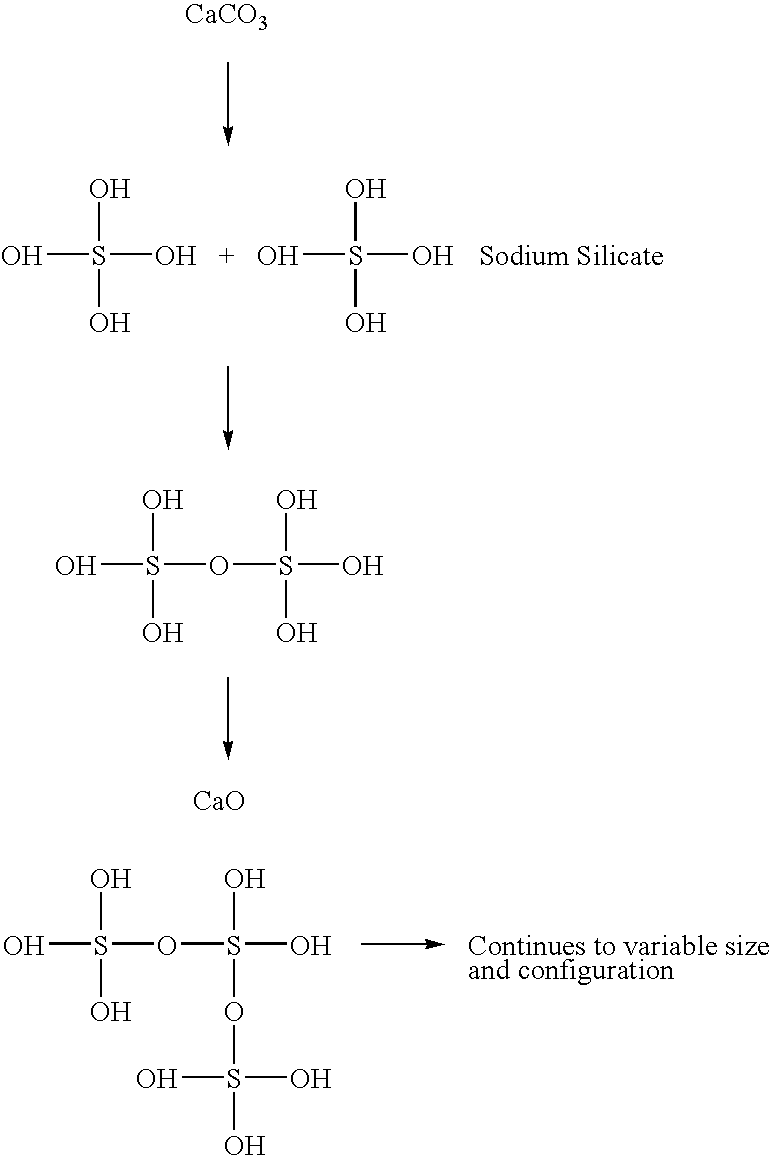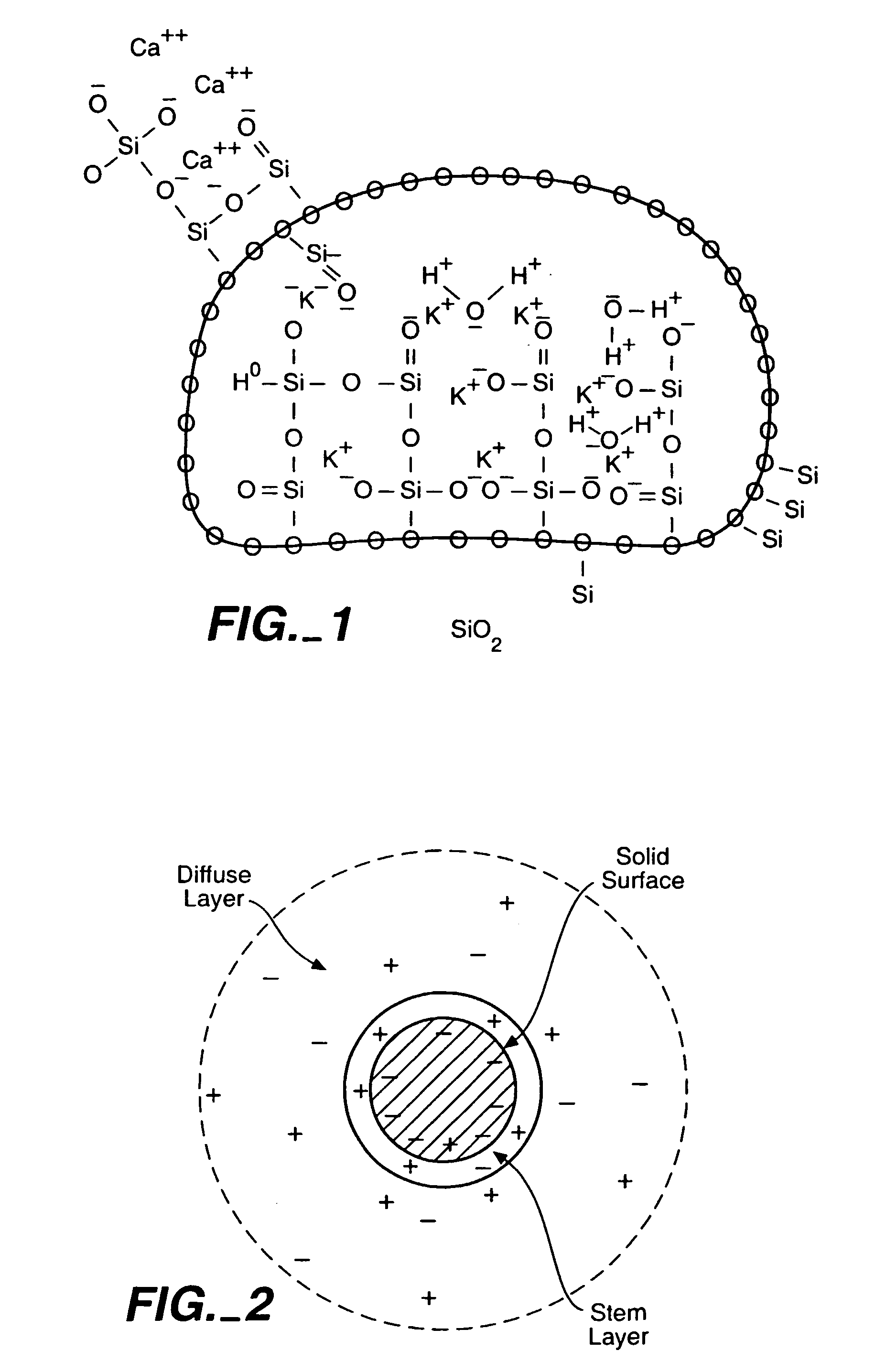Reducing sulfur dioxide emissions from coal combustion
a technology of sulfur dioxide and combustion gas, which is applied in the direction of solid fuel pretreatment, silicon compounds, lighting and heating apparatuses, etc., can solve the problems of so.sub.2 in the combustion gas that is greater than the epa, and is particularly troublesome impurity sulfur
- Summary
- Abstract
- Description
- Claims
- Application Information
AI Technical Summary
Problems solved by technology
Method used
Image
Examples
example ii
[0058] This example describes a representative aqueous composition of this invention, along with a process for preparing it. The reference to the "generator" is to the device described in U.S. patent application Ser. No. 09 / 749,243 to Holcomb, filed on Dec. 26, 2000 and published as US 2001 / 0027219 on Oct. 4, 2001. The generator has a 150-gallon capacity and a flow rate of about 90-100 gallons per minute (gpm). The final composition exhibits a concentration of sodium silicate of about 40,000 ppm or 4% w / v.
[0059] 42 gallons of water (pH 8.13) are added to the generator and circulated through the generator for 20 minutes. 8 gallons of sodium silicate (27% w / v concentration) are added to generator and circulated for 45 minutes. This provides a total of 50 gallons of sodium silicate solution having a pH of 12.20.
[0060] 14.6 lb. of NaOH (sodium hydroxide) pellets are dissolved in 5 gallons of solution from the generator, and the resulting solution is added back into the generator. 2.5 Ga...
example iii
[0065] This example provides representative details for carrying out the process of this invention for the treatment of coal.
[0066] Crushed coal is screened to small stoker size (less than about 1 / 2 inch), and 100 lb is weighed and placed into a 50 gallon barrel, the barrel is sealed and tumbled for 10 min to blend the coal. Coal is removed in 8 lb increments, in random fashion, and placed in two alternate containers: (a) control 50 lb and (b) for treatment 50 lb.
[0067] Five lb of calcium oxide is mixed with the 50 lb coal sample (b) and placed into the sample hopper of a pressure chamber, and the hopper is placed into pressure chamber. The pressure door is closed and tightened to seal. A vacuum is drawn (29"-30" of water) and maintained within the range for, 45 minutes.
[0068] A 4 gallon sample of the composition prepared in Example II is pulled into sample hopper with vacuum, and the system is allowed to equilibrate for 10 minutes. The vacuum is reversed by bleeding CO.sub.2 into t...
PUM
 Login to View More
Login to View More Abstract
Description
Claims
Application Information
 Login to View More
Login to View More - R&D
- Intellectual Property
- Life Sciences
- Materials
- Tech Scout
- Unparalleled Data Quality
- Higher Quality Content
- 60% Fewer Hallucinations
Browse by: Latest US Patents, China's latest patents, Technical Efficacy Thesaurus, Application Domain, Technology Topic, Popular Technical Reports.
© 2025 PatSnap. All rights reserved.Legal|Privacy policy|Modern Slavery Act Transparency Statement|Sitemap|About US| Contact US: help@patsnap.com



